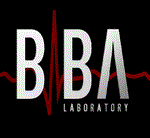Biological Systems Engineering, Department of

Biomedical Imaging and Biosignal Analysis Laboratory
Date of this Version
5-1996
Document Type
Article
Citation
IEEE TRANSACTIONS ON ULTRASONICS, FERROELECTRICS, AND FREQUENCY CONTROL, VOL. 43, NO. 3, MAY 1996, pp. 376 - 384.
Abstract
This article describes a new angle-independent method suitable for three-dimensional (3-D) blood flow velocity measurement that tracks features of the ultrasonic speckle produced by a pulse echo system. In this method, a feature is identified and followed over time to detect motion. Other blood flow velocity measurement methods typically estimate velocity using one- (1-D) or two-dimensional (2-D) spatial and time information. Speckle decorrelation due to motion in the elevation dimension may hinder this estimate of the true 3-D blood flow velocity vector. Feature tracking is a 3-D method with the ability to measure the true blood velocity vector rather than a projection onto a line or plane. Off-line experiments using a tissue phantom and a real-time volumetric ultrasound imaging system have shown that the local maximum detected value of the speckle signal may be identified and tracked for measuring velocities typical of human blood flow. The limitations of feature tracking, including the uncertainty of the peak location and the duration of the local maxima are discussed. An analysis of the expected error using this method is given.
Included in
Biochemistry, Biophysics, and Structural Biology Commons, Bioinformatics Commons, Health Information Technology Commons, Other Analytical, Diagnostic and Therapeutic Techniques and Equipment Commons, Systems and Integrative Physiology Commons


Comments
Copyright 1996 IEEE. Used by permission.